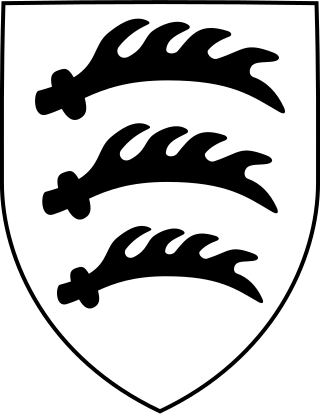| XII SS Army Corps | |
|---|---|
| Active | August 1944 – April 1945 |
| Country | |
| Branch | |
| Size | Corps |
| Engagements | World War II |
The XII SS Army Corps was a corps of the Waffen-SS . It saw action on both the Western and Eastern Fronts during World War II.
| XII SS Army Corps | |
|---|---|
| Active | August 1944 – April 1945 |
| Country | |
| Branch | |
| Size | Corps |
| Engagements | World War II |
The XII SS Army Corps was a corps of the Waffen-SS . It saw action on both the Western and Eastern Fronts during World War II.
The corps was formed on 1 August 1944 in Silesia from the remnants of Kampfgruppe von Gottberg and the LIII Army Corps, and added to the 3rd Panzer Army. From September 1944, it fought in the Western Front as part of the 1st Parachute Army. Later it fought under the 15th Army on the Siegfried Line and the Ruhr Front. The corps was surrounded and destroyed in the Ruhr pocket in April 1945.
16 September 1944
1 March 1945

Felix Martin Julius Steiner was a German SS commander during the Nazi era. During World War II, he served in the Waffen-SS, the combat branch of the SS, and commanded several SS divisions and corps. He was awarded the Knight's Cross of the Iron Cross with Oak Leaves and Swords. Together with Paul Hausser, he contributed significantly to the development and transformation of the Waffen-SS into a combat force made up of volunteers and conscripts from both occupied and un-occupied lands.
The 1st Infantry Division was an infantry division that notably served in World War II as part of the Heer of Nazi Germany's Wehrmacht. It had been one of the original infantry divisions of the Reichswehr.

The German 23rd Infantry Division, later the 26th Panzer Division, was a military unit operational during World War II. It was organized along standard lines for a German infantry division. It was non-motorised and relied on horse-drawn wagons for its mobility. The unit carried the nickname Grenadierkopf.

The 16th Infantry Division of the German Army was formed in 1934. On 26 August 1939 the division was mobilized for the invasion of Poland (1939). It participated in the Battle of France in August 1940. The division was then split, resulting in two independent units: The 16th Panzer Division and the 16th Motorized Infantry Division. Then later, from 1944 onward, combined with other non 16th elements, was known as the 116th Panzer Division.

The 29th Infantry Division was a unit of the German army created in the fall of 1936. It was based on the old Reichswehr 15th Infantry Regiment and drew its initial recruits from Thuringia. It was upgraded to 29th Motorized Infantry Division in the fall of 1937. The division was also known as the Falke-Division.

The 3rd Infantry Division was an infantry division of the German Army that fought in World War II. The division was established under the cover name Wehrgauleitung Frankfurt in 1934 by expanding the 3rd Division of the Reichswehr. It was redesignated Kommandant von Frankfurt shortly afterward, and took on its bona fide name when the formation of the Wehrmacht was announced in October 1935. In March 1939 the division took part in the invasion and occupation of Czechoslovakia.
The III (Germanic) SS Panzer Corps was a Waffen-SS armoured corps which saw action on the Eastern Front during World War II. The (Germanische) part of its designation was granted as it was composed primarily of foreign volunteer formations.
The 11th Panzer Division was an armoured division in the German Army during World War II, established in 1940.

Matthias Kleinheisterkamp was a German SS commander during the Nazi era. Reaching the rank of SS-Obergruppenführer, he commanded the SS Division Totenkopf, SS Division Nord, SS Division Das Reich, III SS Panzer Corps, VII SS Panzer Corps, IV SS Panzer Corps, XII SS Army Corps and the XI SS Army Corps in World War II. Kleinheisterkamp died by suicide after being captured by the Soviets.
The 19th Panzer Division was an armoured division in the German Army, the Wehrmacht, during World War II. It was created from the 19th Infantry Division.
The X SS Corps was a short-lived Waffen-SS corps-level headquarters employed on the Eastern Front in 1945 during World War II.

Karl Decker was a general in the Wehrmacht of Nazi Germany during World War II who committed suicide in the Ruhr Pocket on 21 April 1945. He was a recipient of the Knight's Cross of the Iron Cross with Oak Leaves and Swords.

The 14th Panzer Division was an armoured division in the German Army during World War II. It was created in 1940 by the conversion of the 4th Infantry Division.
The V SS Mountain Corps was a Waffen-SS formation that existed in the later periods of World War II. The corps fought against the Yugoslav Partisans in the Balkans as part of the 2nd Panzer Army from October 1943 to December 1944. At this time it rarely had more than two understrength divisions. In 1945, the corps fought on the Oder line as part of the 9th Army, in the Frankfurt (Oder) area, and in the Battle of Berlin that followed.

The 25th Infantry Division was a military unit of the German Wehrmacht. It was later reclassified to 25th Motorized Infantry Division, and in June 1943 to the 25th Panzergrenadier Division.

The 15th Infantry Division was an infantry division of the German Army during the interwar period and World War II, active from 1934 to 1945.

The 256th Infantry Division was a German infantry division in World War II. They formed on August 1939 as part of the 4. Welle (wave). The division was destroyed at Vitebsk in June 1944 during Operation Bagration. The remnants of the division formed Divisions-Gruppe 256 which was assigned to Korpsabteilung H.
XIII Army Corps was a corps of the German Army during World War II. Made up of several divisions, which varied from time to time, it was formed in Nuremberg on 1 October 1937.
The XXIV Army Corps was a unit of the German Army during World War II. The unit was re-designated several times; originally being Generalkommando der Grenztruppen Saarpfalz, later Generalkommando XXIV. Armeekorps, then XXIV. Armeekorps (mot.) and finally XXIV. Panzerkorps.

The 376th Infantry Division was an infantry division of the German Army during World War II, active from 1942 to 1944 in two separate instances.